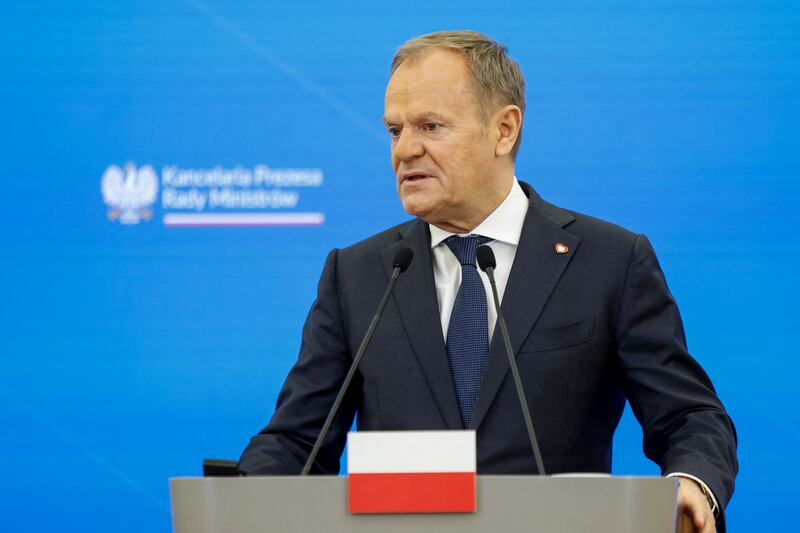Strip away the bells and whistles and it becomes apparent that the Government’s latest housing policy, Housing For All, 2022 — 2030, is essentially the previous policy, Rebuilding Ireland, Action Plan for Housing and Homelessness, 2016 — 2021, reincarnated.
This is bad news in terms of resolving Ireland’s housing crisis.
The Government has been upping the ante in terms of expenditure: Rebuilding Ireland cost €10 billion over six years whereas Housing For All is projected to cost €36 billion over nine years
The Government has been upping the ante in terms of expenditure: Rebuilding Ireland cost €10 billion over six years whereas Housing For All is projected to cost €36 billion over nine years. But throwing money at the housing problem will not suffice if the underlying policy is flawed.
The challenge facing the Government is roughly as follows: it is widely accepted that the demand for new housing in Ireland is approximately 35,000 units annually. (Some experts estimate the requirement to be even higher) Of this, the private sector can be expected to deliver 20,000 units leaving the public sector to deliver the residual 15,000 units.
Under Rebuilding Ireland, the average housing output was 24,673 units over the six years. This is well above the 15,000 threshold, suggesting that the policy has been a resounding success.
The problem is that 19,973 or 81 per cent of this output was achieved under three categories: subsidising rents under the Housing Assistance Programme (HAP) and the Rental Accommodation Scheme (RAS), acquisitions and leasing. These schemes, of which the HAP is the most significant, do not add to the country’s housing stock as they effectively involve local authorities providing supports for people living in existing properties. In turn, this affects the rental market and increases the problems of supply shortage which have led to rents rising to record levels.
The remaining fourth category, “Build”, which measures additional new housing stock, accounted for the remaining 4,695 units or 19 per cent of the total.
However, of this figure, only 1,643 houses, or 7 per cent of the overall total, were built by the 31 local authorities spread around the country. The rest were built by Approved Housing Bodies, non-profit charitable organisations, or under the Part V scheme, which gives local authorities the power to take a portion of new developments for local and affordable housing, generally in houses built by the developer of the site.
Hugely problematic
This level of output by the local authorities is well short of the 15,000 housing units required each year. Importantly, the local authorities do not build new dwellings per se. Funded from central government, they pay private-sector developers to construct the new units.
In 2021, the average cost of a new housing unit was approximately €300,000, excluding the cost of land, design and installing utilities.
The reliance on HAP and RAS is also hugely problematic. Leaving aside the implications for a contracting rental market, in 2021 there were 79,088 households in subsidised rental accommodation carrying an average annual subsidy of €8,391 per unit.
This haemorrhaging of the public finances, without as much as a North Face tent to show for it, is clearly unsustainable
These rentals cost €661 million in 2021 and €2.7 billion in total between 2016 and 2021. And it is getting progressively more expensive. The annual rental subsidy increased by 766 per cent over the six years as more and more people required support.
This haemorrhaging of the public finances, without as much as a North Face tent to show for it, is clearly unsustainable. Putting resources into building houses, rather than into supporting people staying in the existing stock, would clearly be a much more sustainable approach.
Depressingly, these numbers are being repeated in the first six months of 2022 under the new Housing For All programme. A total of 5,091 households have been added to the rental sector and the local authorities build only 647 new housing units.
Of the 31 local authorities, 10 did not produce a single housing unit in the first half of 2022.
Clearly, it is not possible to have another eight and a half years of this. Even the most ardent supporter of government policy must recognise that this policy is headed for the proverbial rocks.
DIY approach
An alternative is a DIY approach. Create 31 State-owned construction companies based on the same grid as the local authorities. These companies would be independent, but have a “special relationship”, with local authorities and would be digitally integrated to ensure specialisation and economies of scale.
The initial objective would be 10,000 social housing units annually, or 322 units per local authority, rising to 15,000 annually in time.
A new, digitally integrated, construction infrastructure opens up endless positive possibilities: apprenticeship and craft schemes, design awards for architecture and engineering, developing eco-friendly construction techniques and so on.
It is worth mentioning one new addition to Housing For All line-up and that is the Mortgage to Rent scheme. This failed scheme was first introduced in 2012 and has been resurrected to boost the leasing figures. The scheme entails a householder relinquishing ownership of their property to become a tenant and switching from an unaffordable mortgage to a reduced rent.
So far, 223 households surrendered their homes in 2022. Is this quasi-eviction type scheme the Minister’s idea of rebuilding Ireland?
Dr Anthony Leddin is a former member of the Department of Economics, University of Limerick.




